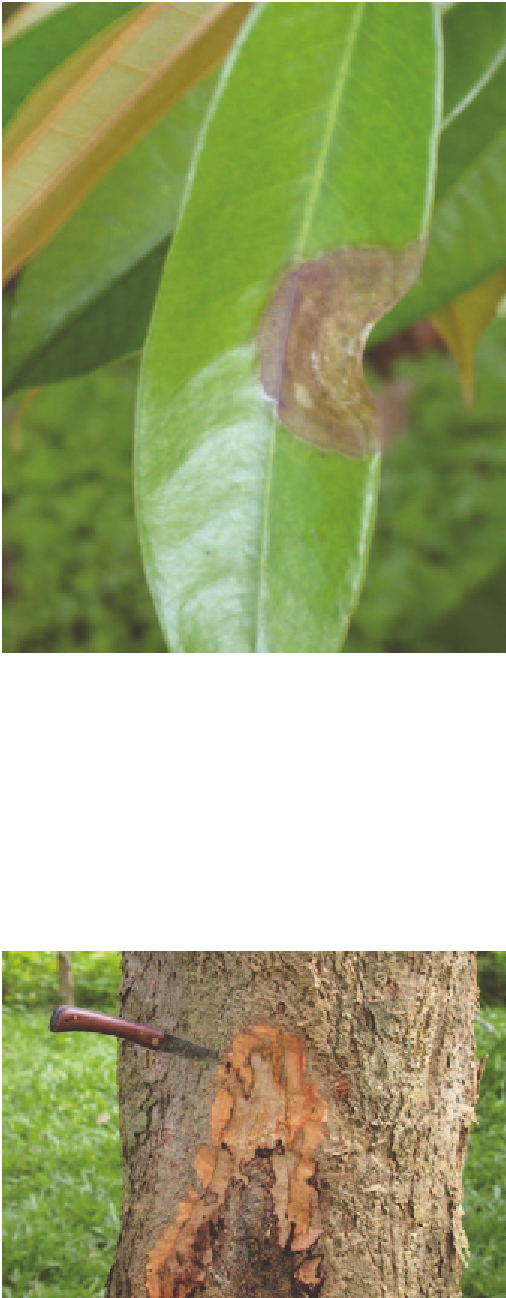Agriculture Reference
In-Depth Information
Fruit rot may occur both before and after harvest.
Symptoms on the fruit first appear as small water-soaked
lesions on the outer skin that later coalesce to form brown
to black lesions. Under humid conditions sporangia may
appear as white powdery masses on the surface of the lesion
of the fruit. Symptoms extend through the rind and into
the f flesh.
Source of infection and spread
Phytophthora palmivora
occurs throughout tropical
regions. Inoculum can either originate from infections
in the canopy on leaves, twigs, fruit and cankers, which
sporulate under wet humid conditions.
Phytophthora
palmivora
can also survive in the soil and on durian fruit
that has been left on the orchard f loor. Sporangia at soil
level can then be splashed up into the canopy and spread
further by wind and rain during the rainy season. Water-
borne zoospores from the canopy and formed on fruit on
the ground infect the trunk and fruit tissue through
natural openings and wounds. Root infection is favoured
by waterlogging and soil disturbance. Fruit may be
infected before harvest by inoculum produced from
lesions present in the canopy or when fruit fall to the
ground at harvest or maturity. Rainy conditions at
harvest favour fruit infection.
Fig 19.8 Phytophthora leaf lesion on durian.
Occurrence
Phytophthora palmivora
is endemic in many wet tropical
areas and causes serious losses of durian trees and fruit
throughout South-East Asia.
margin to the diseased tissue. Lesions can girdle the tree
causing tree decline, defoliation and death. Leaf blight
may occur on individual leaves in the field but it can kill
seedlings in the nursery and in the field if the whole
foliage becomes infected. Roots of nursery stock and,
occasionally, mature trees can be affected by root rot.
Although root rot can kill nursery stock, it is not usually
the cause of mature tree decline.
Management
•
Cultural conditions recommended for managing
Phytophthora
are similar for various tree crops.
Management methods detailed in the section on root rot
of avocado and trunk canker of macadamia will help
manage the root and trunk diseases.
Plant disease-free nursery stock.
•
Avoid planting highly susceptible durian cultivars.
•
Use rootstocks with a higher level of disease tolerance
to root rot.
•
FURTHER INFORMATION
■
D r e n t h A & G u e s t D I ( E d s ) ( 2 0 0 4 )
Diversity and Management
of Phytophthora in Southeast Asia
. ACIAR Monograph 114.
ACIAR: Canberra.
L i m T TK ( 1 9 9 0 )
Durian diseases and disorders.
T r o p i c a l
Press: Kuala Lumpur.
Fig 19.9 Bark removed exposing severe canker lesion on durian.












